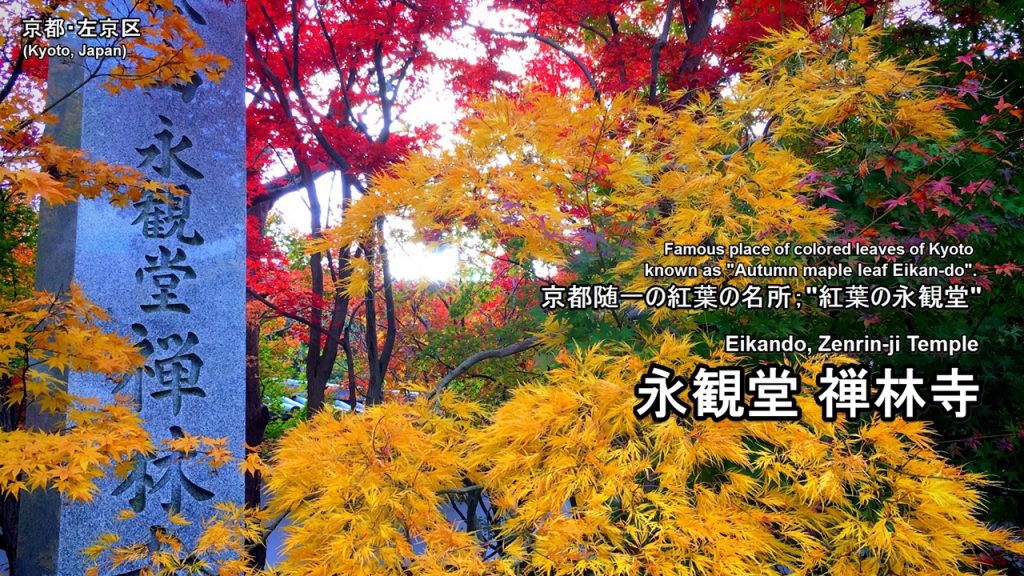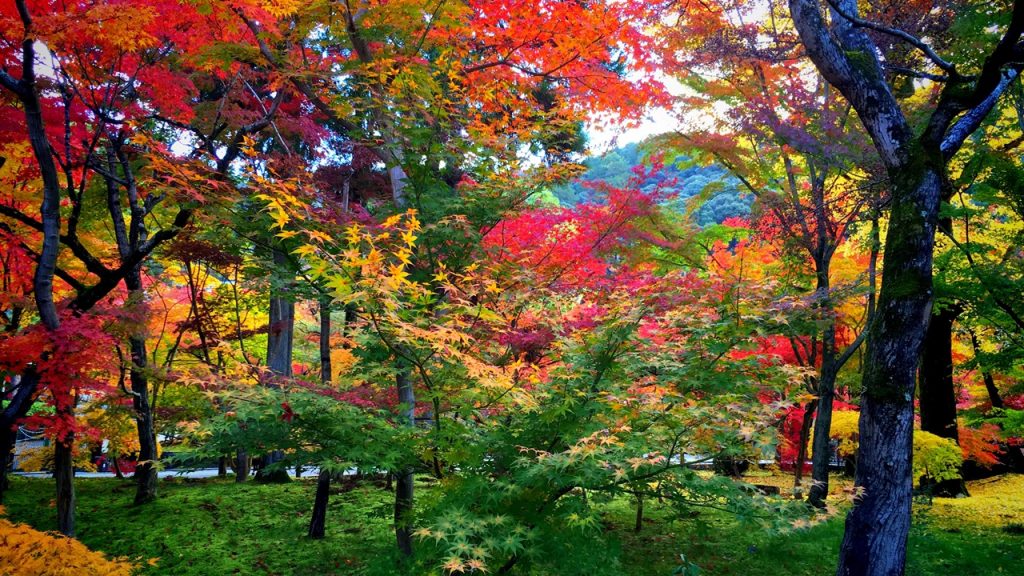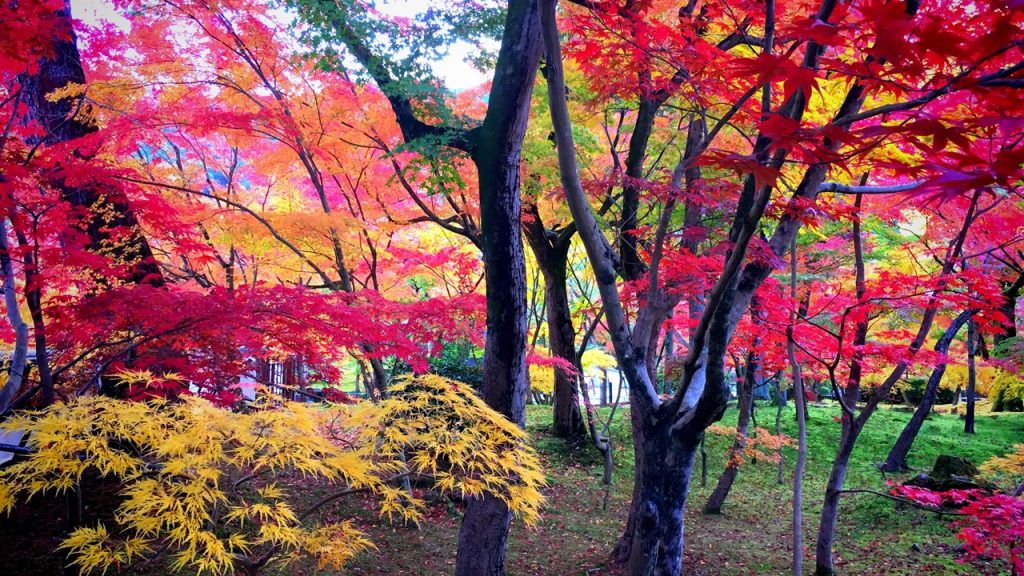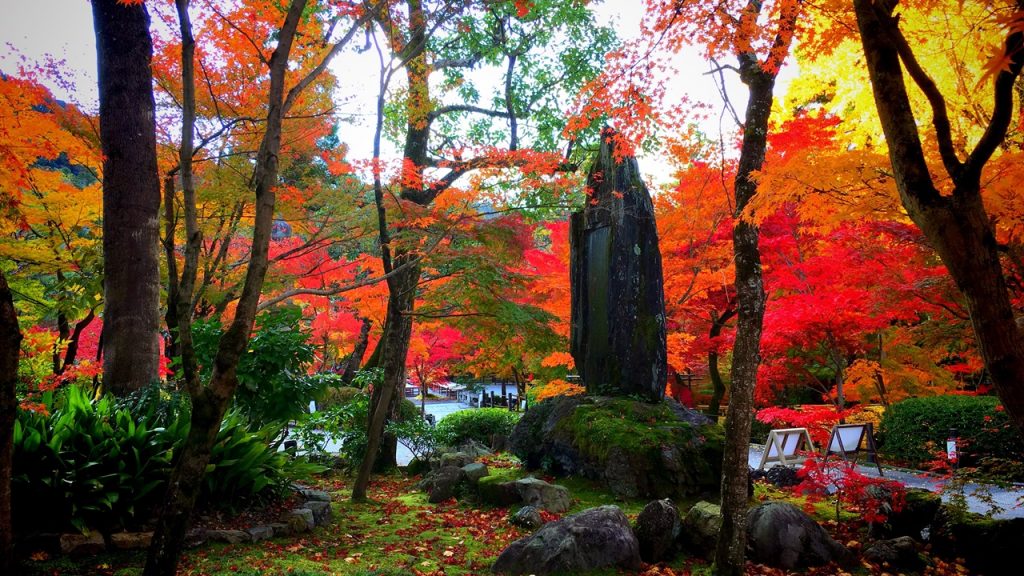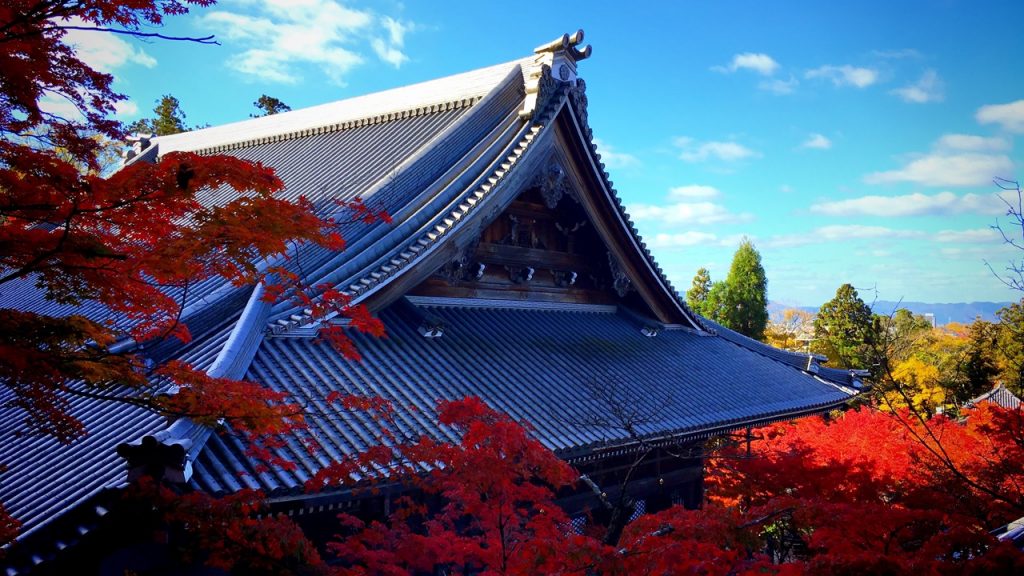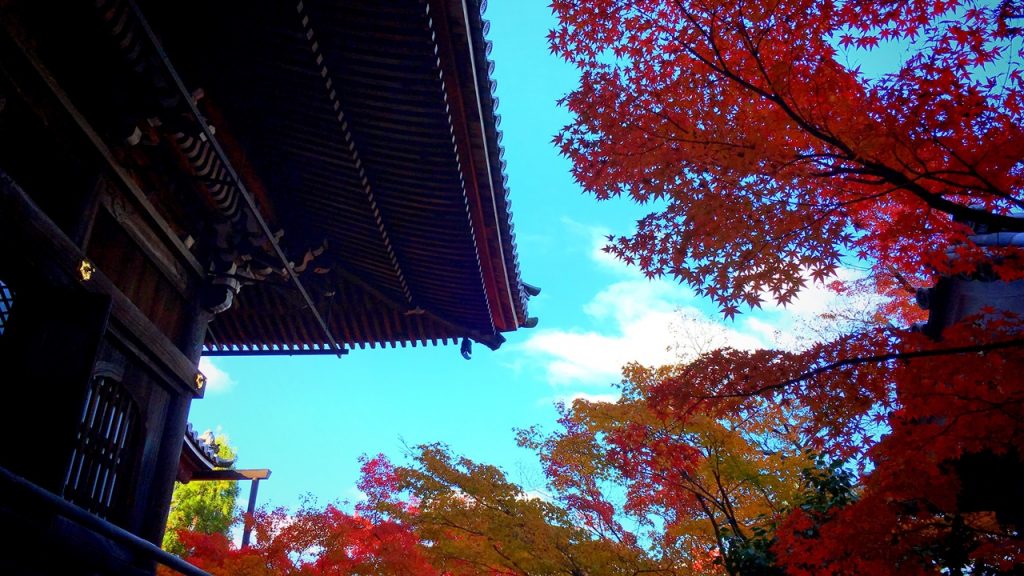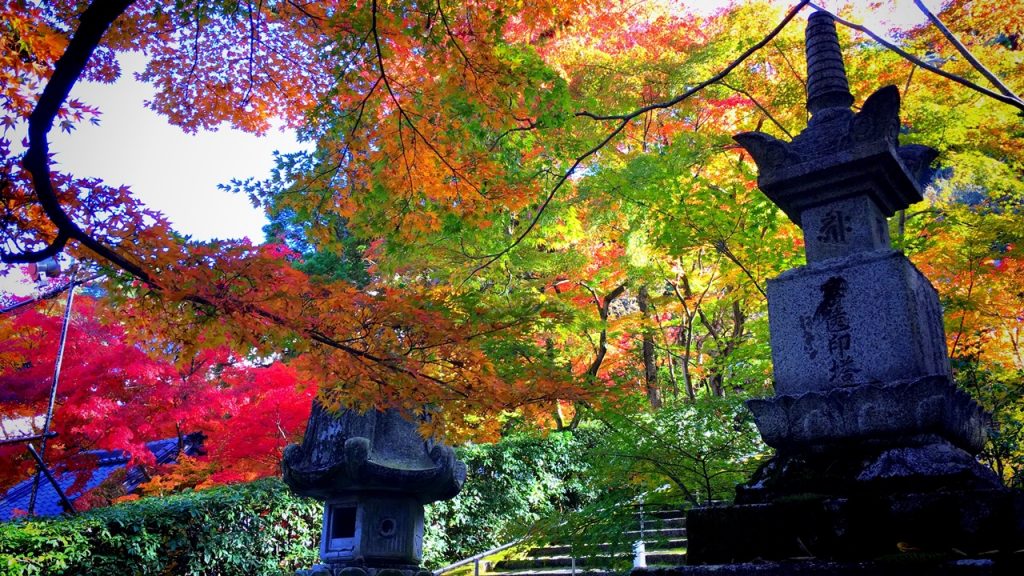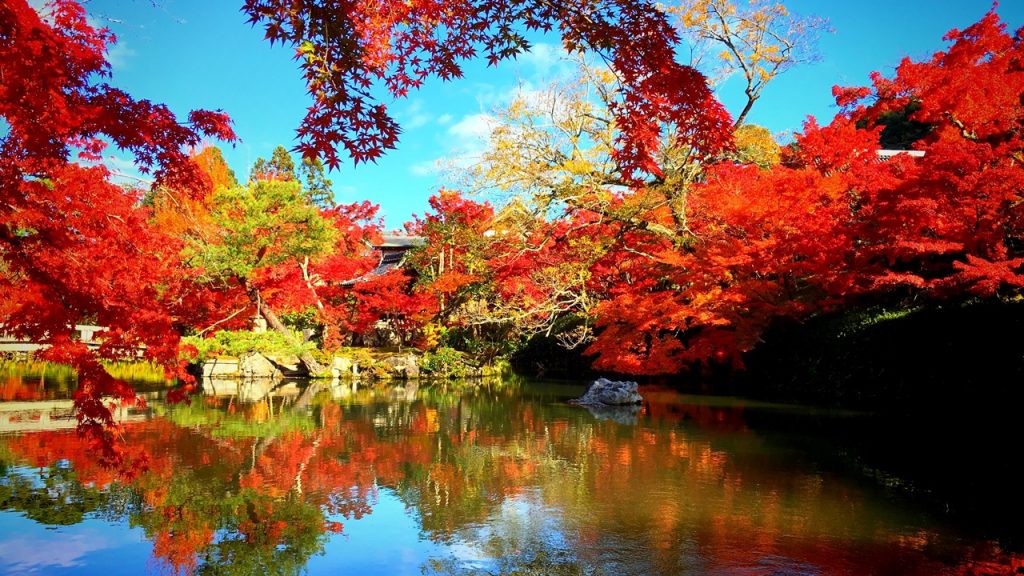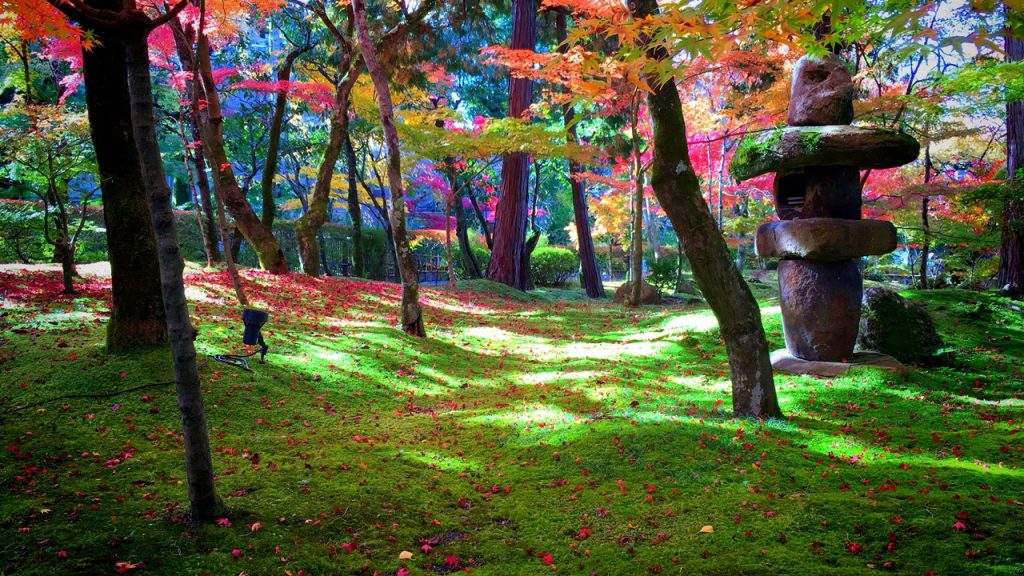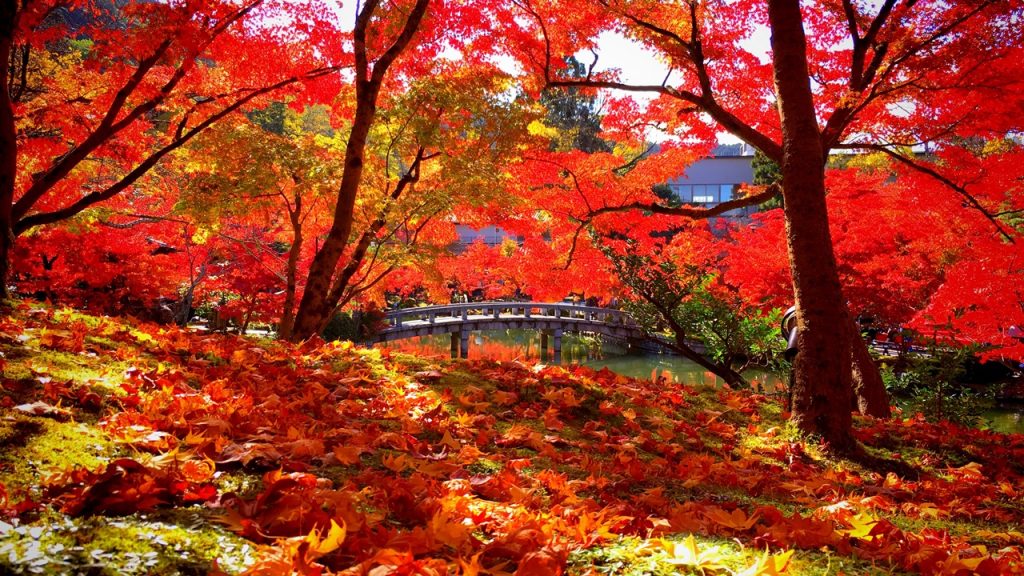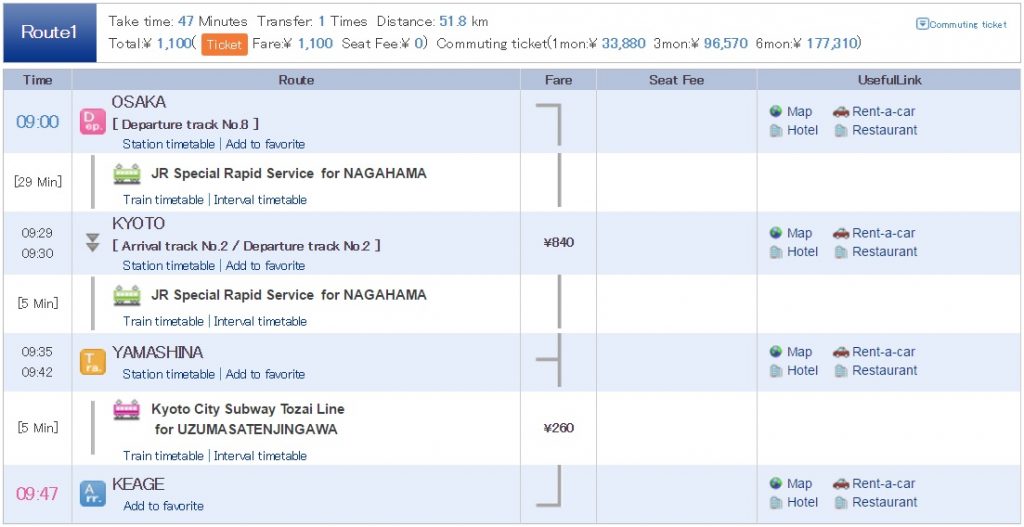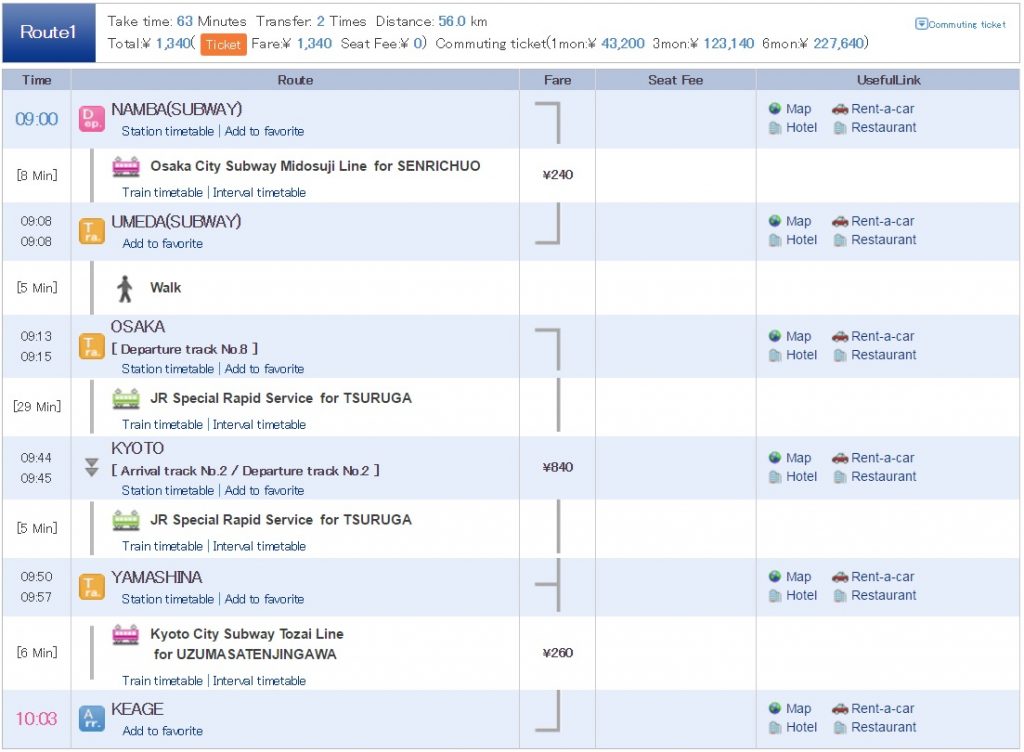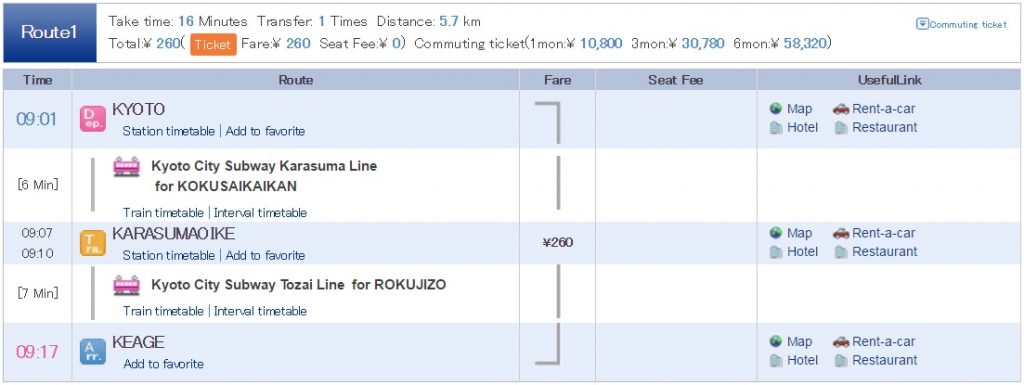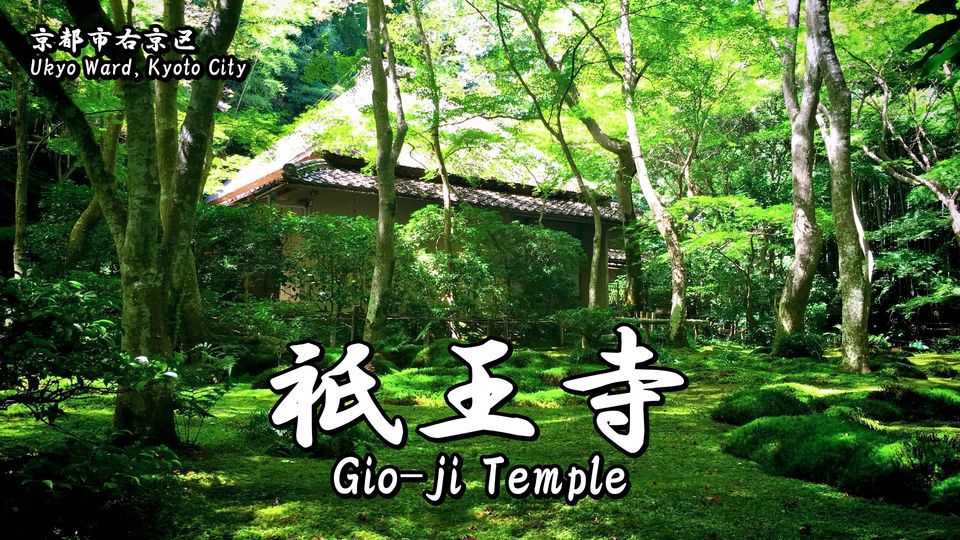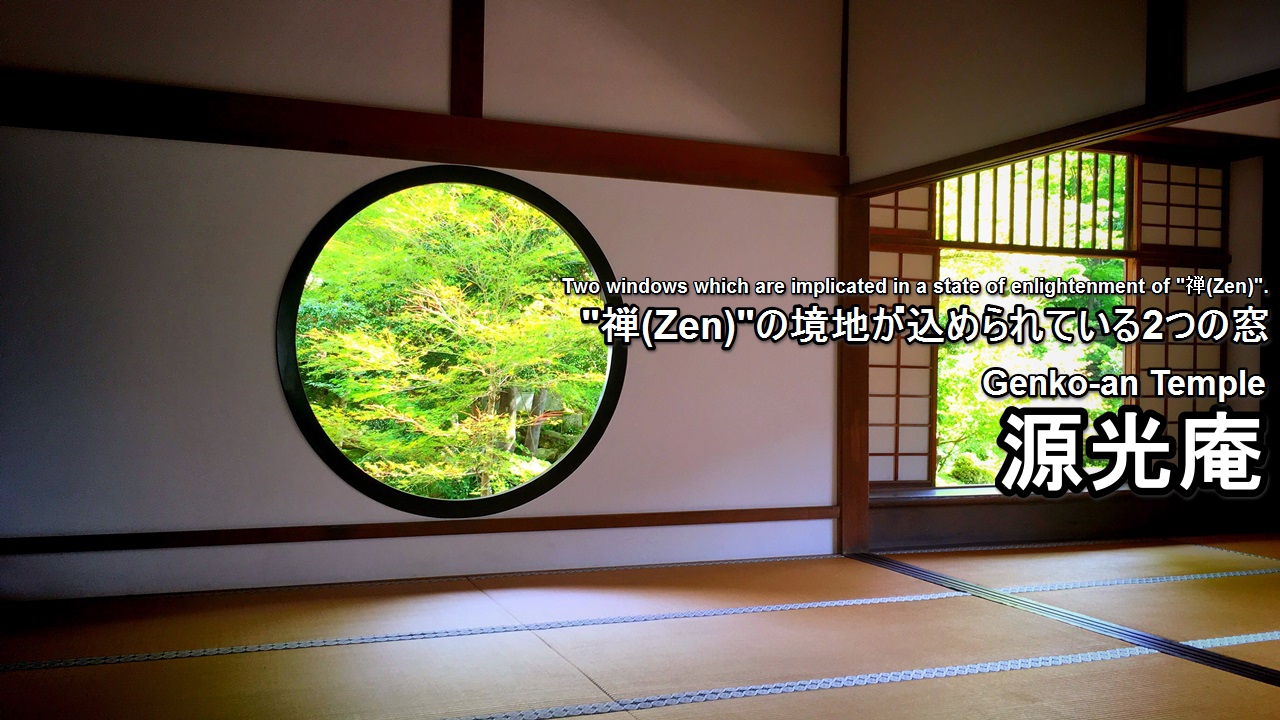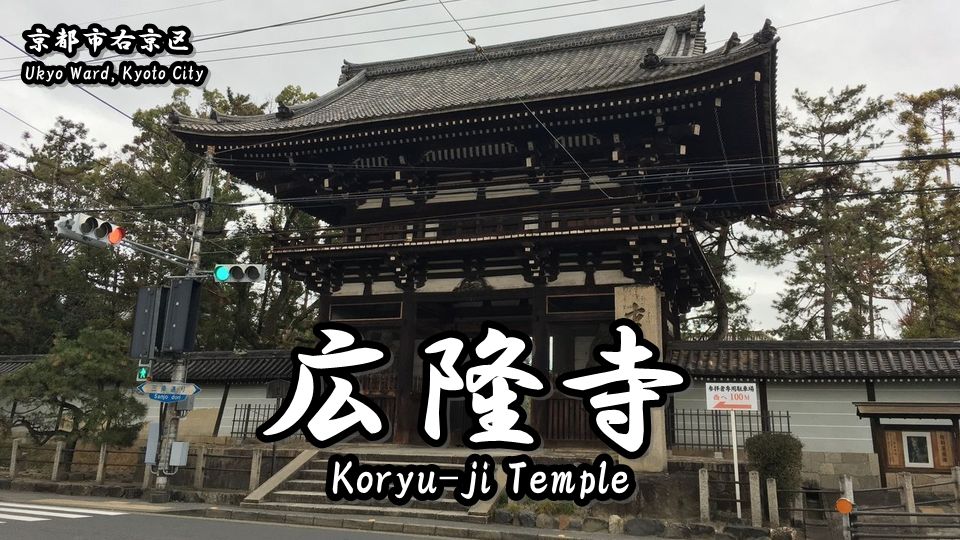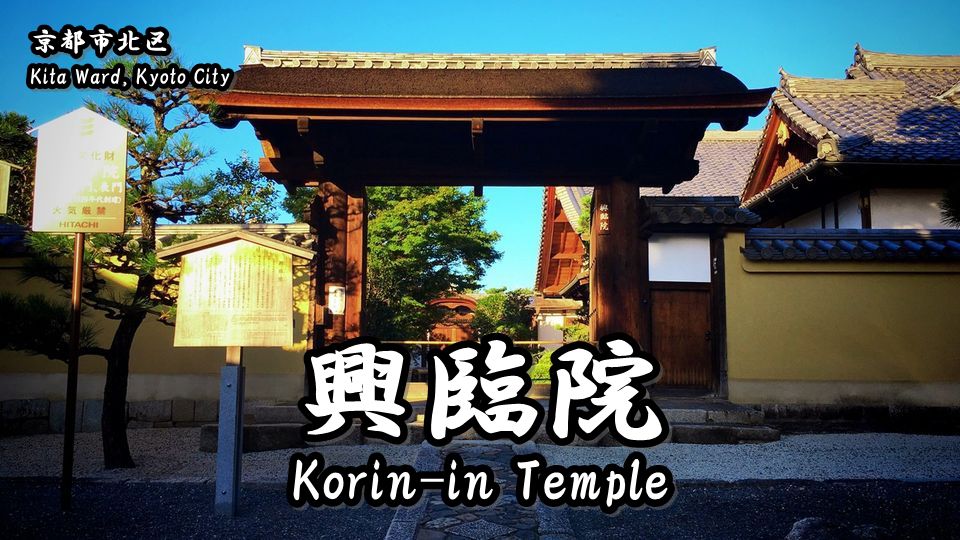Einak-do (Zenrin-ji) Temple, located in Eikando-cho, Sakyo Ward, Kyoto City, is the headquarters of the Seizan-Zenrin-ji branch of the Pure Land Sect.
I went to many famous places of colored leaves in Kyoto so far.
Among these places, there are three particularly splendid places.
Those are…
“Eikan-do (Zenrin-ji) Temple”
“Nanzen-ji Temple“
“Tofuku-ji Temple“
These three places are one of the most famous places of colored leaves in Kyoto.
Of course, however, these places are crowded with many tourists.
But…!!
It is the place that is worth going even if these places are crowded.
Contents:
- About Eikan-do Temple
- Colored leaves of Eikan-do Temple
- Highlights of Eikan-do Temple
- Goshuin of Eikan-do Temple
- How to get to Eikan-do Temple
1.About Eikan-do Temple
Eikan-dō Zenrin-ji (永観堂禅林寺) is the head temple for the Seizan branch of Japan’s Jōdo-shū (Pure Land) Buddhist sect, located in Kyoto, Sakyō-ku. It was founded by Shinshō, a pupil of Kūkai, and is famous for its fall foliage and for its prominence in the past as a center of learning.
引用(citation):https://en.wikipedia.org/wiki/Eikan-d%C5%8D_Zenrin-ji
Open(Normal period):9:00~17:00
Open(Exhibition/illumination period):9:00~16:00(Exhibition),17:30~21:00(illumination)
Admission fee(Normal period):600 yen(Adults),400 yen(High school student or younger)
Admission fee(Exhibition):1,000 yen(Adults),400 yen(High school student or younger)
Admission fee(illumination):600 yen(Junior high school student or older)
Address:48, Eikandocho, Sakyo-ku Kyoto-shi, Kyoto, 606-8445, Japan
Phone Number:+81-75-761-0007
Einak-do (Zenrin-ji) Temple, located in Eikando-cho, Sakyo Ward, Kyoto City, is the headquarters of the Seizan-Zenrin-ji branch of the Pure Land Sect.
The principal idol of this temple is Amida Nyorai.
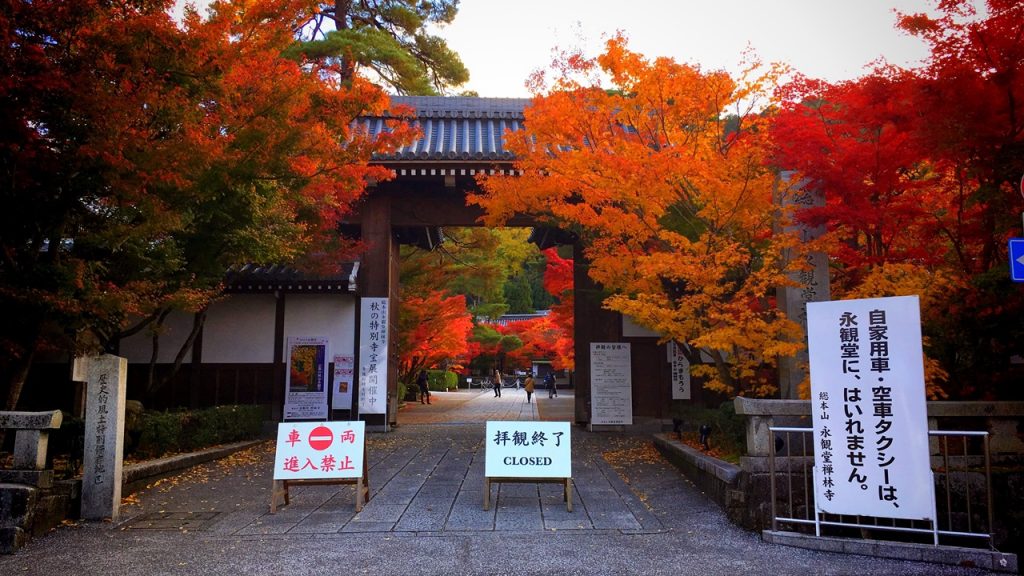
The official name of this temple is Zenrin-ji Temple.
But, it’s commonly known by the name Eikan-do Temple.

It was due to the role of chief priest Yokan that Zenrin-ji Temple came to be called Eikan-do Temple.
“Eikan-do Temple”, the other name of Zenrin-ji Temple, derives from his name.
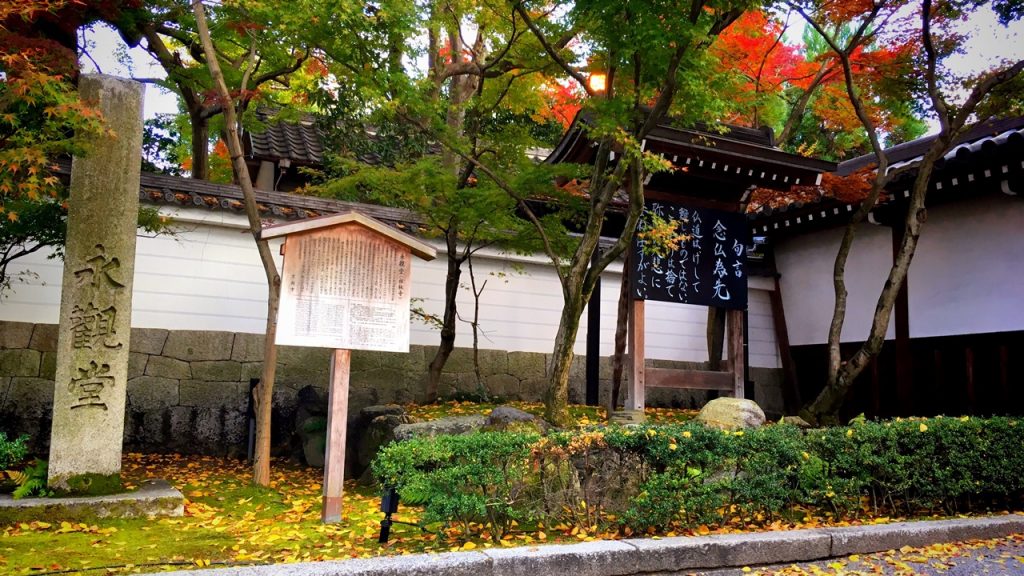
Yokan was a priest of Sanron sect (The Three-Discourse Sect of Buddhism) in the later Heian period.
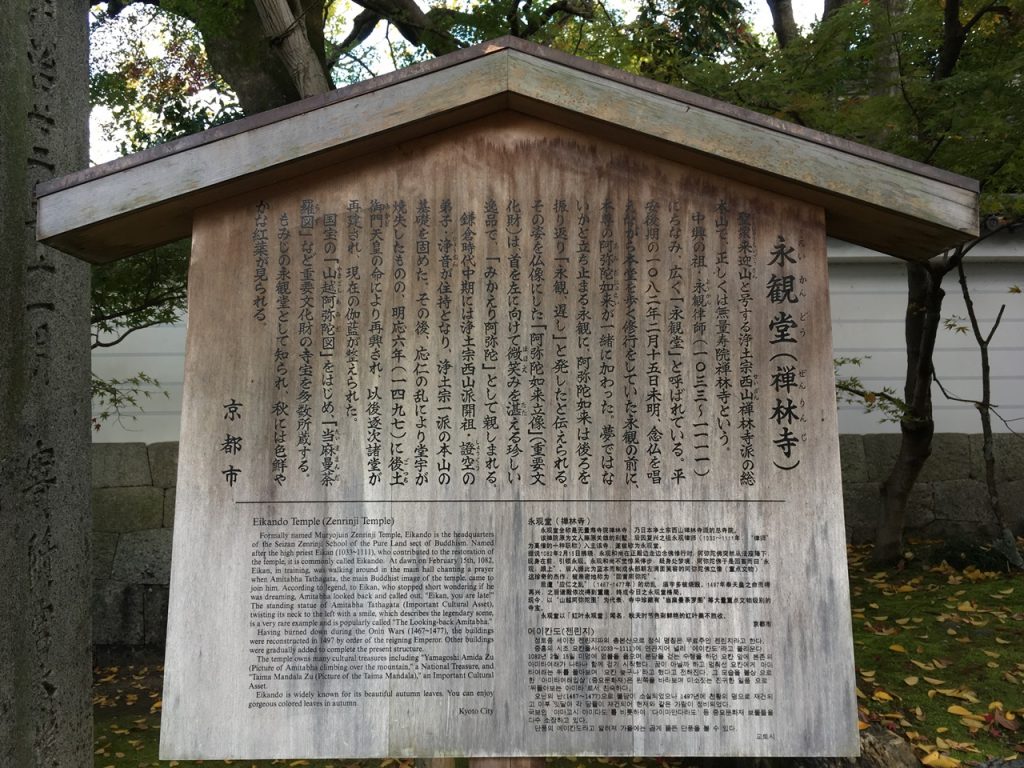
He encouraged people to recite the Nembutsu and established a Yakuo-in Hall on this temple, which took care of the sick and organized charitable work.
It could be said that he was the forefather of today’s social welfare activities.
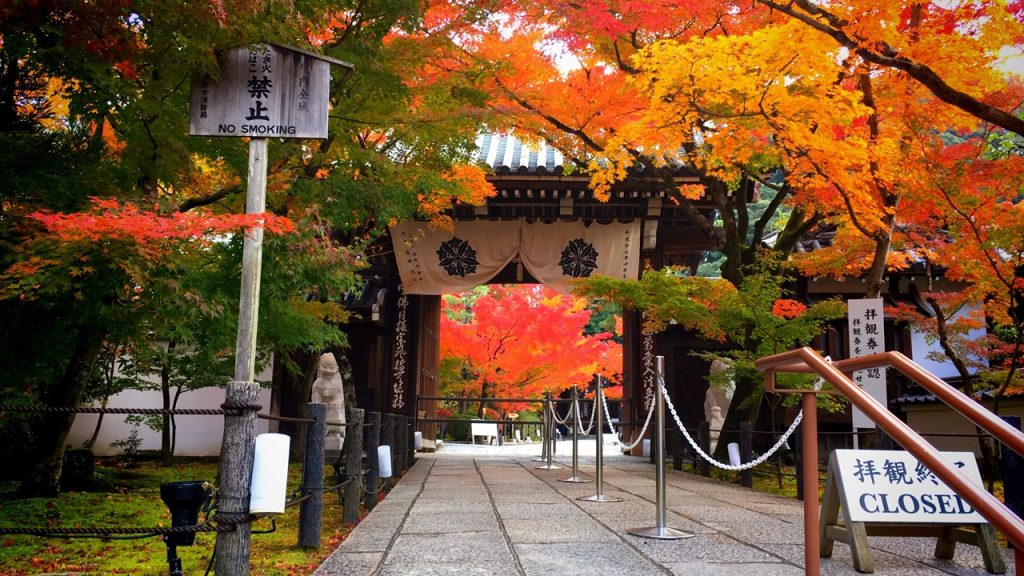
2.Colored leaves of Eikan-do Temple
Peak of the autumn leaves:Mid November – Early December
First of all, I would like to point out that yhis temple is crowded very much.
If you possible, I recommend that you will go to this temple early in the morning of weekdays.
In addition, the neighboring roads are congested very much at the time of colored leaves.
(I can’t recommend going by taxi.)
At 8:00 a.m., you can already see the orderly lines at this temple’s gate…
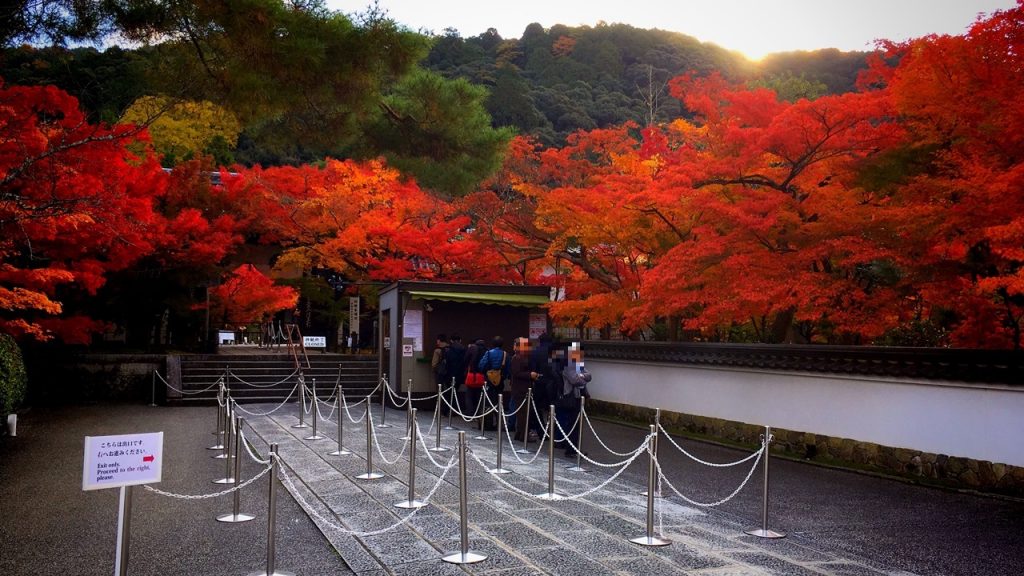
However, there is no problem even if there are many tourists in the precincts of this temple because it is very wide.
About 3,000 maple trees are planted in the precincts of this temple.
Seeing is believing.
From this point on, let’s watch a photograph of this temple’s autumn leaves.
■Movie■YouTube:禅林寺(紅葉の永観堂):Zenrin-ji Temple (Autumn maple leaf Eikan-do)
■Photos■
How did you like it?
Next, let’s watch the highlight of Eikan-do Temple!!
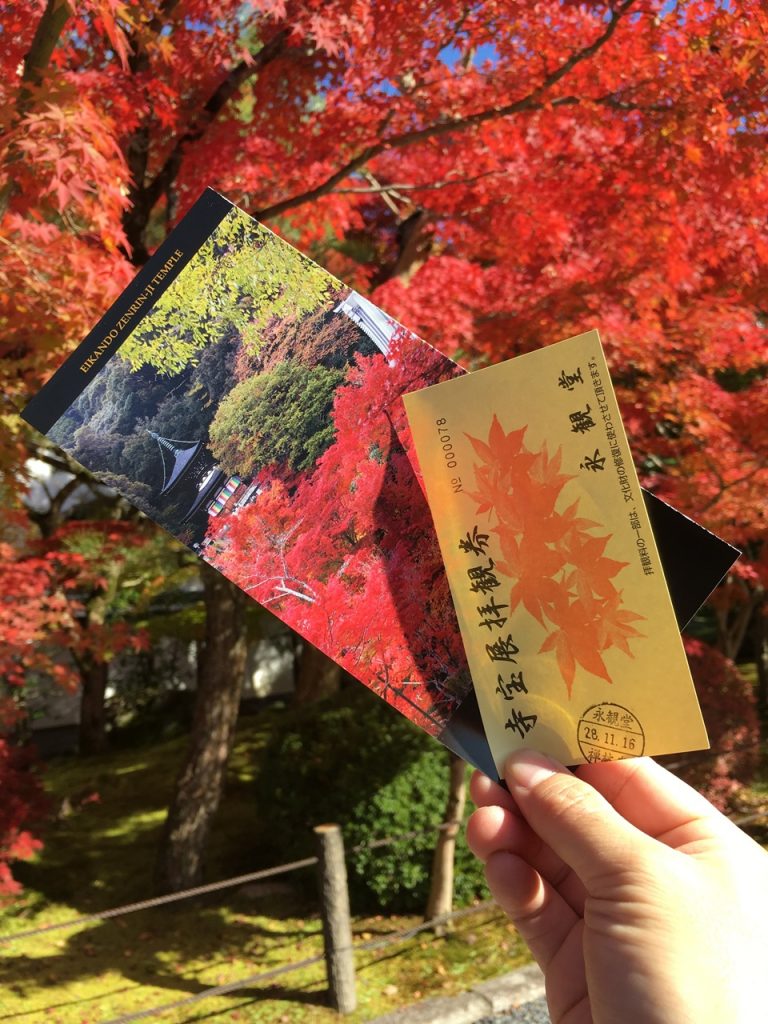
3.Highlights of Eikan-do Temple
- 総門:Somon gate (Main Gate)
- 中門:Chumon gate
- 鶴寿台:Kakuju-dai
- 古方丈:Kohojo
- 瑞紫殿:Zuishi-den
- 釈迦堂:Shaka-do hall
- 唐門:Karamon gate
- 御影堂:Miei-do hall
- 臥龍廊:Garyu-rou
- 水琴窟:Suikinkutsu (water harp cave)
- 三鈷の松:Sanko-no-matsu
- 開山堂:Kaizan-do hall
- 阿弥陀堂:Amida-do hall
- 鐘楼:Shoro (bell tower)
- 多宝塔:Taho-to (Two-storied pagoda)
- 方丈池:Hojo-ike Pond
- 弁天社:Benten-sha Shrine
●総門:Somon gate (Main Gate)
This is Somon gate (Main Gate) which is the entrances of this temple.
This gate was built in the end of Edo period.
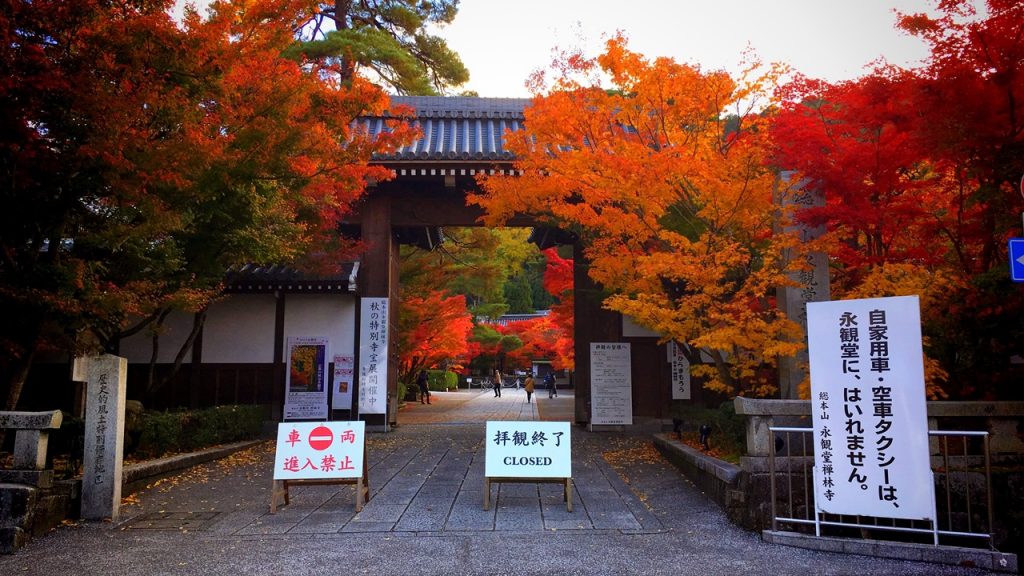
●中門:Chumon gate
This is Chumon gate which was built in 1744 of the Edo period.
This gate is inner gate of this temple.

●鶴寿台:Kakuju-dai
This building is Kakuju-dai and temple’s office.
This building is called Kuri in other general temple.

●古方丈:Kohojo
This is Kohojo built in 1666 of the Edo period.
This building is used as Shoin (Study hall).

●瑞紫殿:Zuishi-den
This is Zuishi-den which was rebuilt in 1895.
Wooden seated statue of Amida Nyorai which is the principal idol of this temple is worshiped in this building.
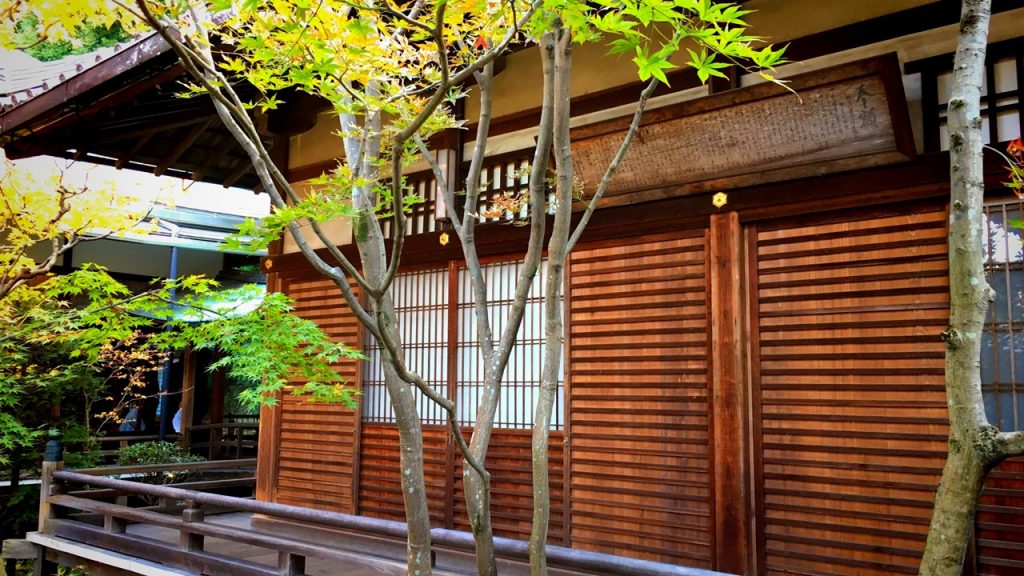
●釈迦堂:Shaka-do hall
Shaka-do hall was built in the Muromachi period.
This building is used as Hojo (Abbot’s Quarters).

●唐門:Karamon gate
This is Karamon gate which was built in 1830 of the Edo period.
This gate is built in the front of Shaka-do hall.
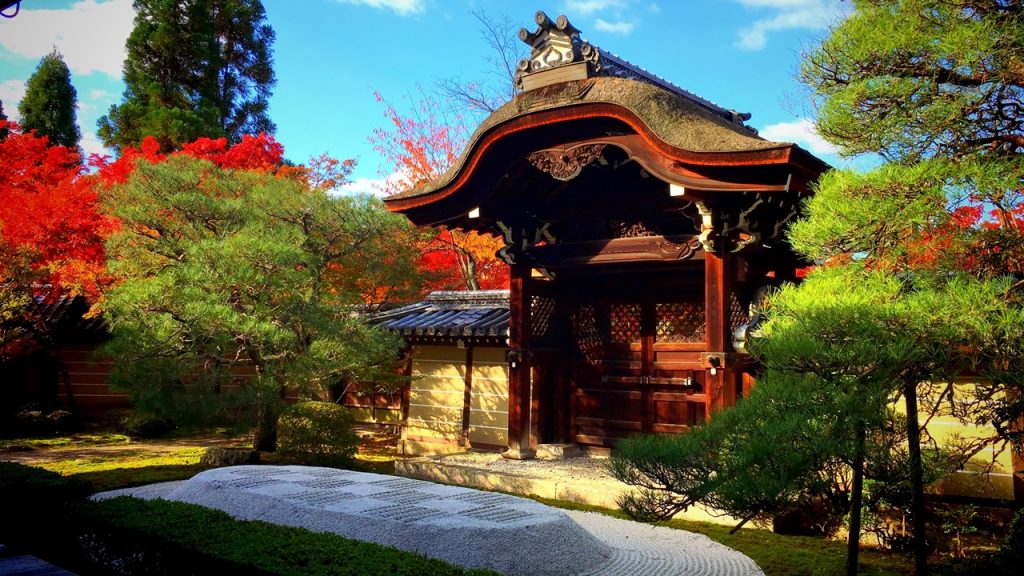
When the chief priest of this temple died, this gate is opened.
This gate is registered as a cultural property designated by Kyoto Prefecture.

●御影堂:Miei-do hall
Miei-do hall is a relatively new building which was built in 1912.
Honen Shonin who is a sect founder of Jodo sect is enshrined in this building.
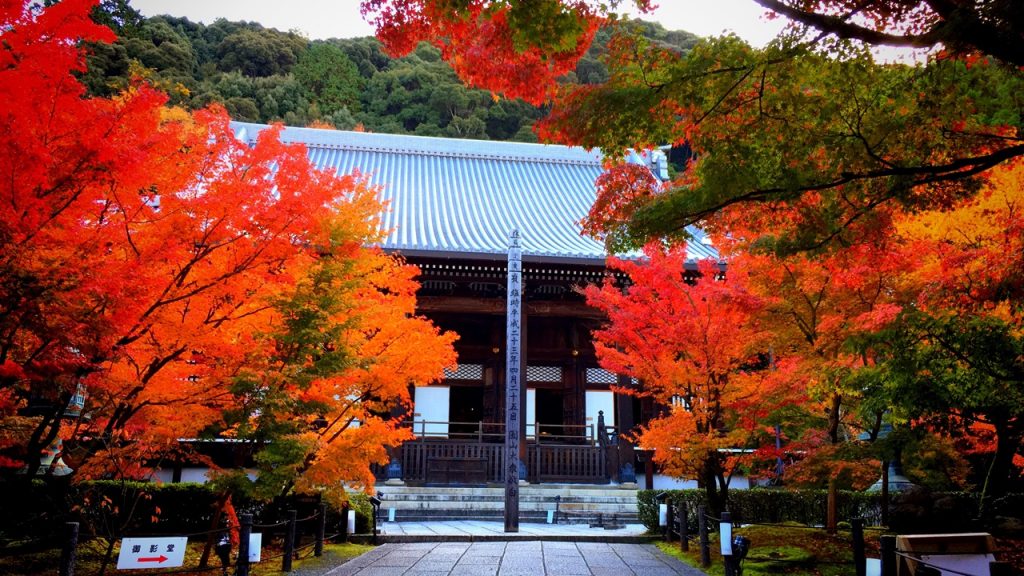
●臥龍廊:Garyu-rou
There is a corridor called Garyu-rou in the backside of Miei-do hall.
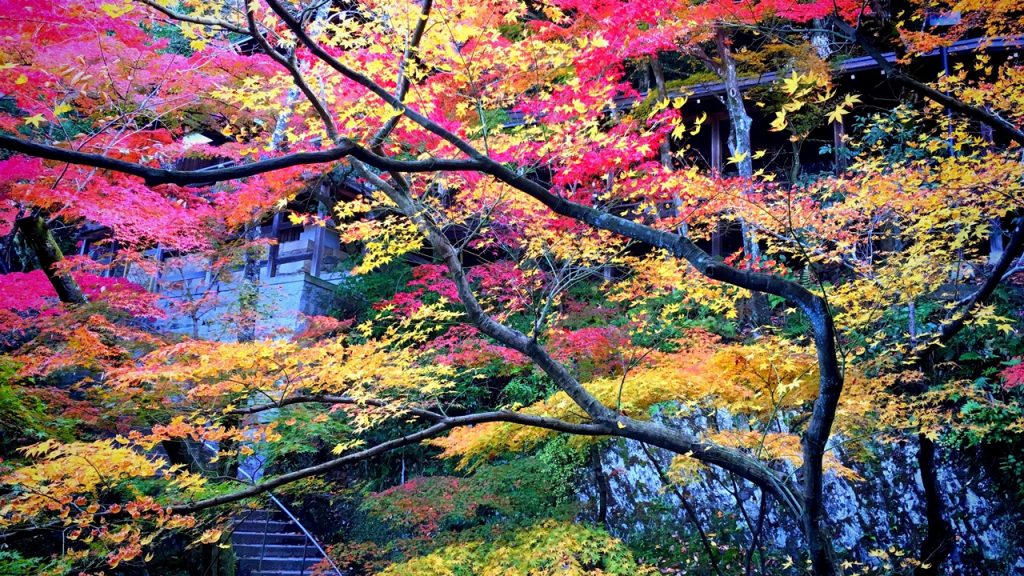
●水琴窟:Suikinkutsu (water harp cave)
There is Suikinkutsu (water harp cave) at the entrance of the corridor.
Because a sound of running water echoes in a well, it is totally like the tone of the harp.
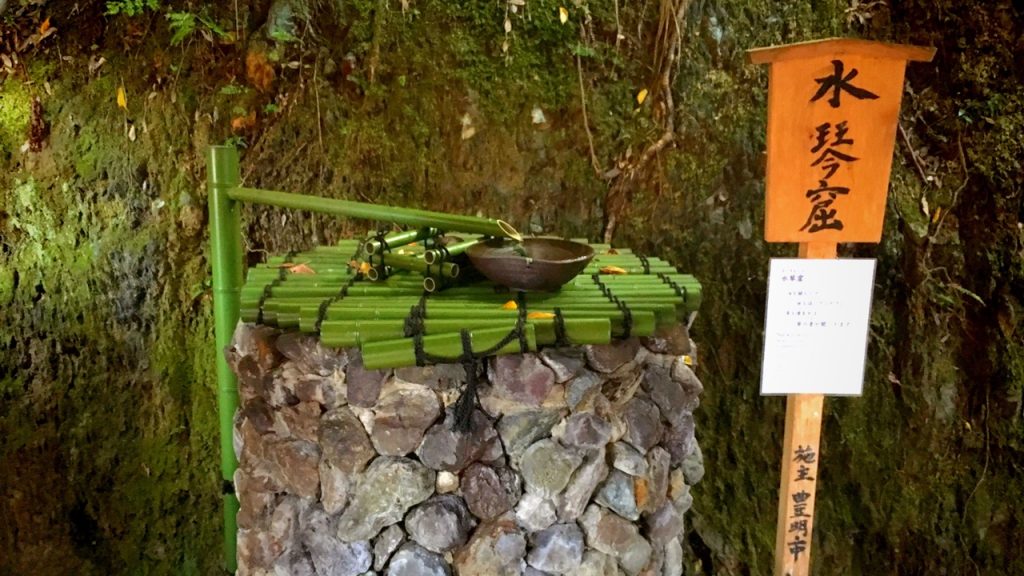
●三鈷の松:Sanko-no-matsu
The common pine needle is two leaves, but this pine needle is three leaves.
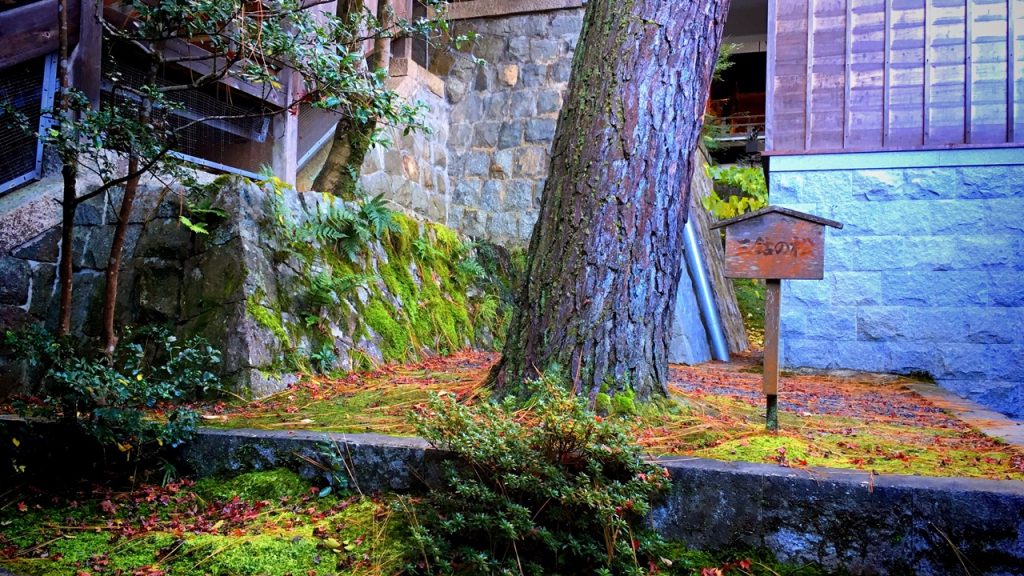
●開山堂:Kaizan-do hall
There is Kaizan-do hall at the end of the corridor.
Shinsho who is the initiator of this temple is worshiped in this building.
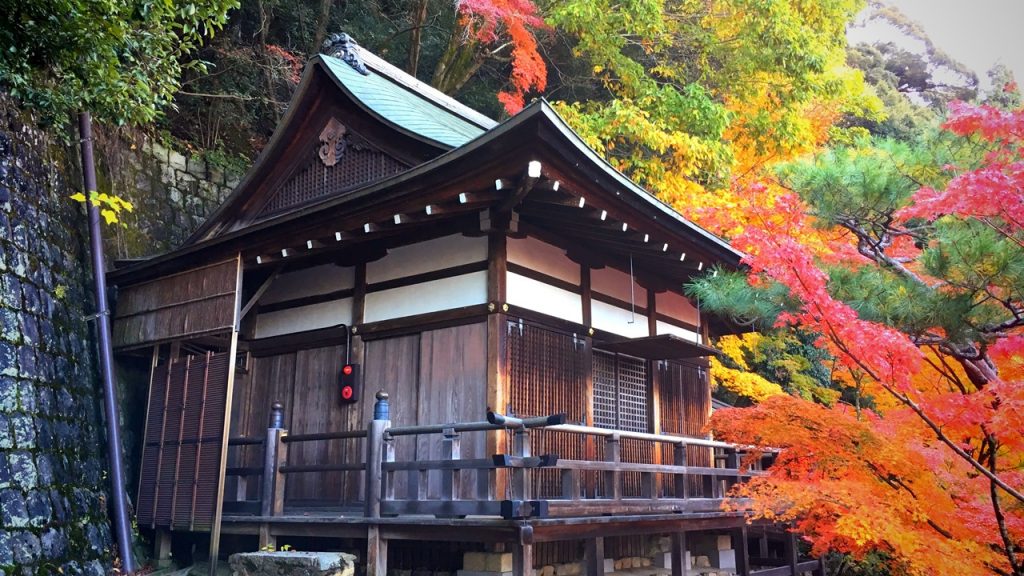
●阿弥陀堂:
This is Amida-do hall which was built in 1597 of the Azuchimomoyama period.
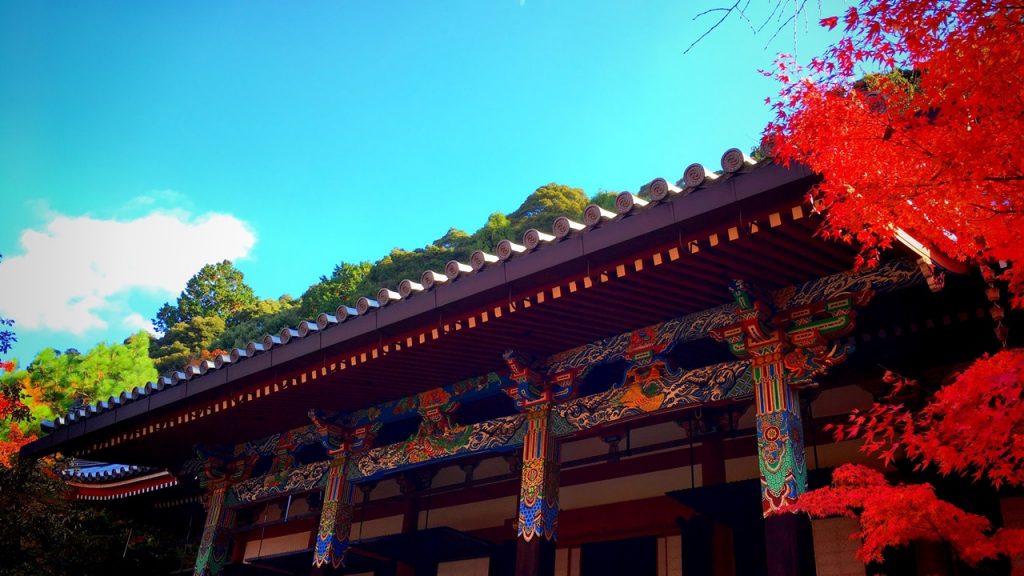
Wooden standing of Amida Nyorai (Mikaeri Amida) is worshiped in this building.
This unique statue commonly known as ‘Mikaeri Amida’ is looking over its left shoulder (right when looking face on).
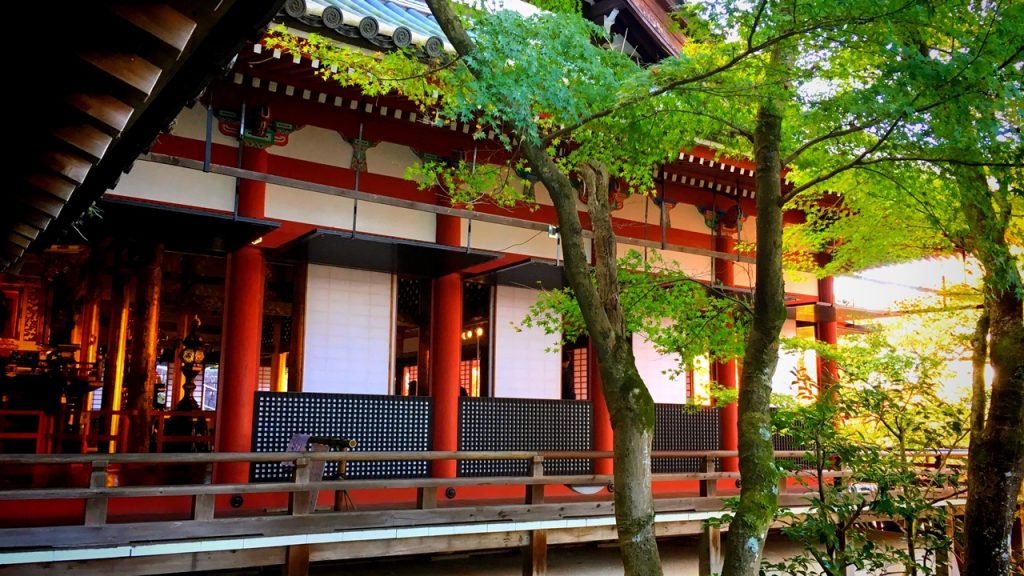
●鐘楼:Shoro (bell tower)
This is Shoro (bell tower) which was built in 1707 of the Edo period.

●多宝塔:Taho-to (Two-storied pagoda)
Taho-to (Two-storied pagoda) is built on the hill behind the precincts of this temple.
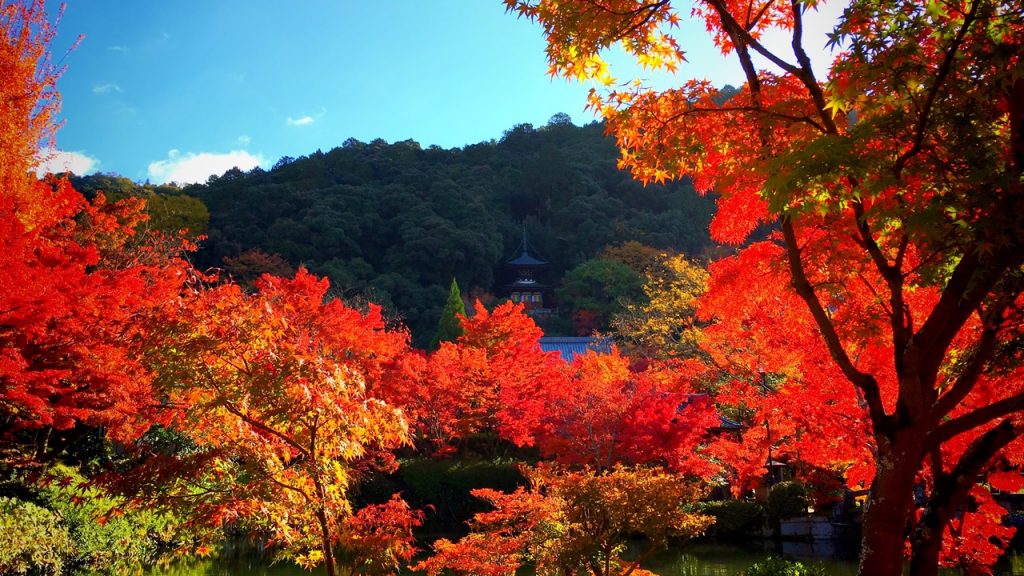
Taho-to (Two-storied pagoda) is a relatively new building which was built in 1928.

●方丈池:Hojo-ike Pond
There is a pond called Hojo-ike Pond in the center of this temple.
In autumn, colored leaves reflect in the surface of the water of this pond and are very beautiful.
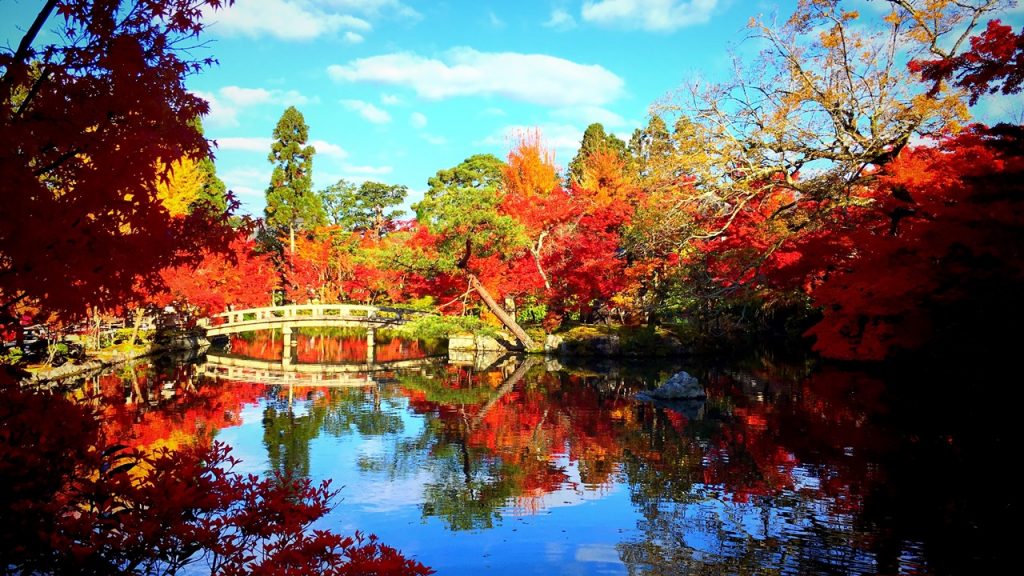
●弁天社:Benten-sha Shrine
There is Benten-sha Shrine in the central island of this pond.
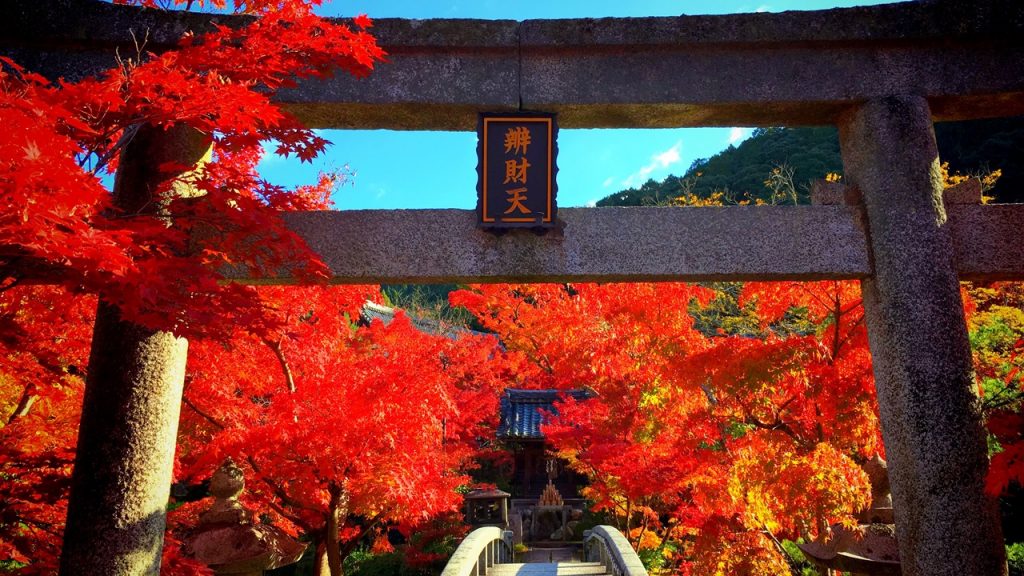
4.Goshuin of Eikan-do Temple
This Temple’s Sumigaki(The words which was written with a sumi(black ink)) is “顧阿彌陀如来(Amida Nyorai (Mikaeri Amida))” which is the principal idol of this temple.
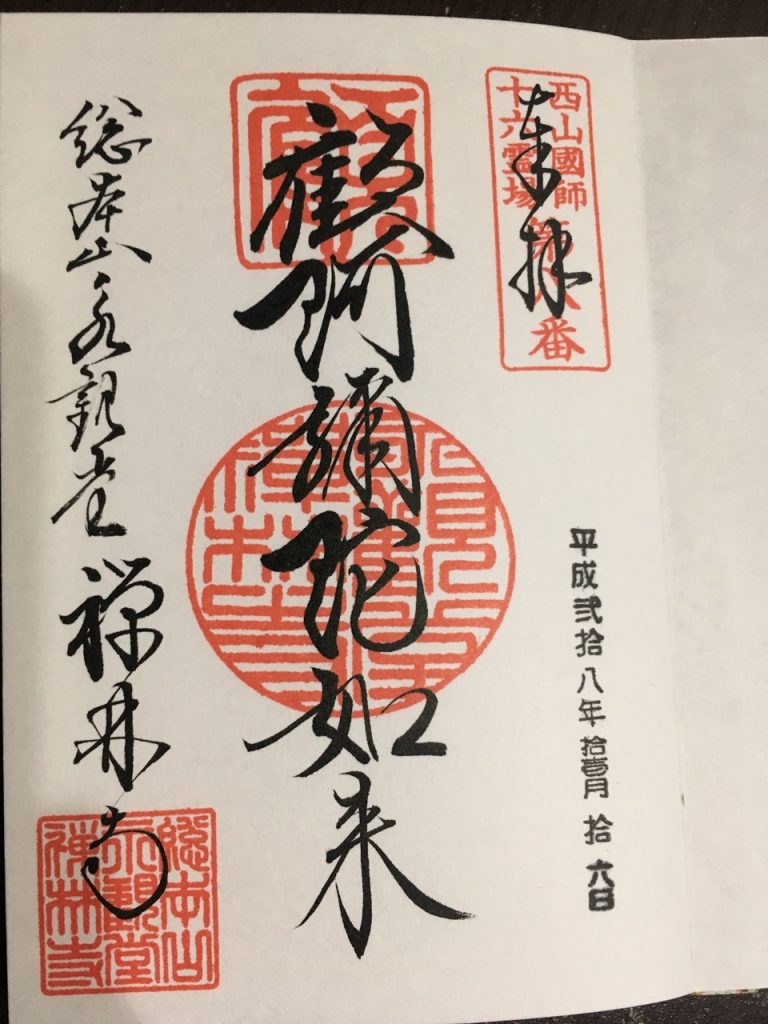
5.How to get to Eikan-do Temple
The nearest station of Eikan-do Temple is “Subway Keage Station”.
(We can also go by bus from “JR Kyoto Station”, “Keihan Sanjo Station”.)
■Keage Station→Eikan-do Temple
We go on foot from Keage Sta. to Eikan-do Temple.
It’s about 25 minutes (1km) on foot.
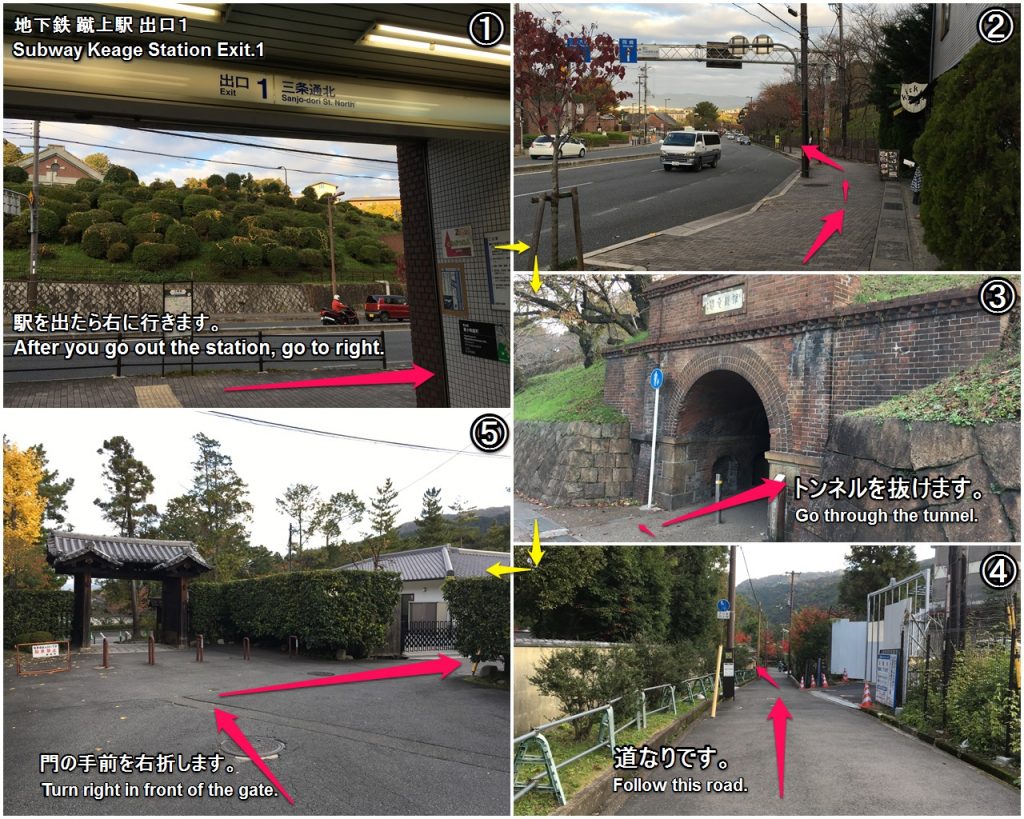
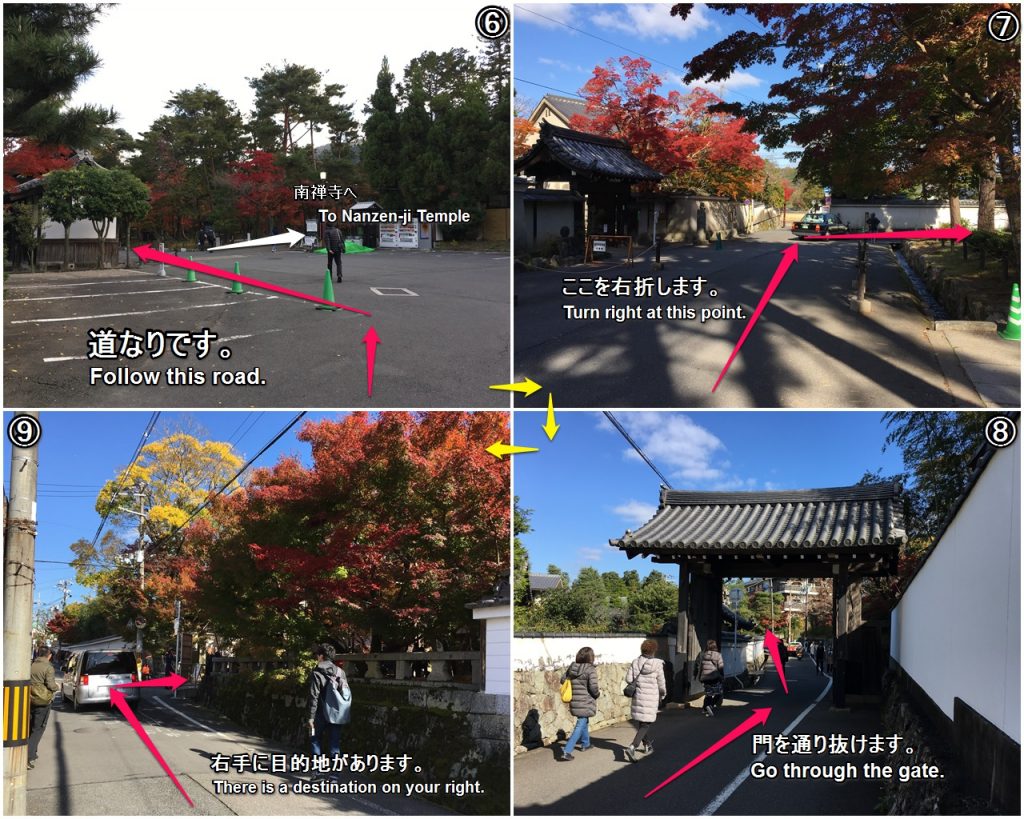
■In the case of bus
Timetable and Route Search of bus
①When you get on a bus from JR Kyoto Station
[Timetable]
Route No.5
Route No.100
Bus company:Kyoto City Bus
Routes/Destination:No.5[for Ginkakuji/Iwakura], No.100[Kiyomizudera/Ginkakuji]
Boarding bus stop:Kyoto Sta.[A1]or[D1]
Alighting bus stop:No.5[Nanzenji Eikando-michi], No.100[Miyanomaecho]
Bus fare:230 yen
Time required:About 35 min
②When you get on a bus from Keihan Sanjo Station
[Timetable]
Route No.5
Bus company:Kyoto City Bus
Routes/Destination:No.5[for Ginkakuji/Iwakura]
Boarding bus stop:Sanjo Keihan-mae[D]
Alighting bus stop:Nanzenji Eikando-michi
Bus fare:230 yen
Time required:About 10 min
How did you like it?
Please try to go.
Have a nice trip! XD
<Let’s search the sightseeing information of Kansai in Japan on ‘Japan’s Travel Manual‘!!>
<This site introduces the easiest way to get Japanese (Kansai) sightseeing spots to you.>

